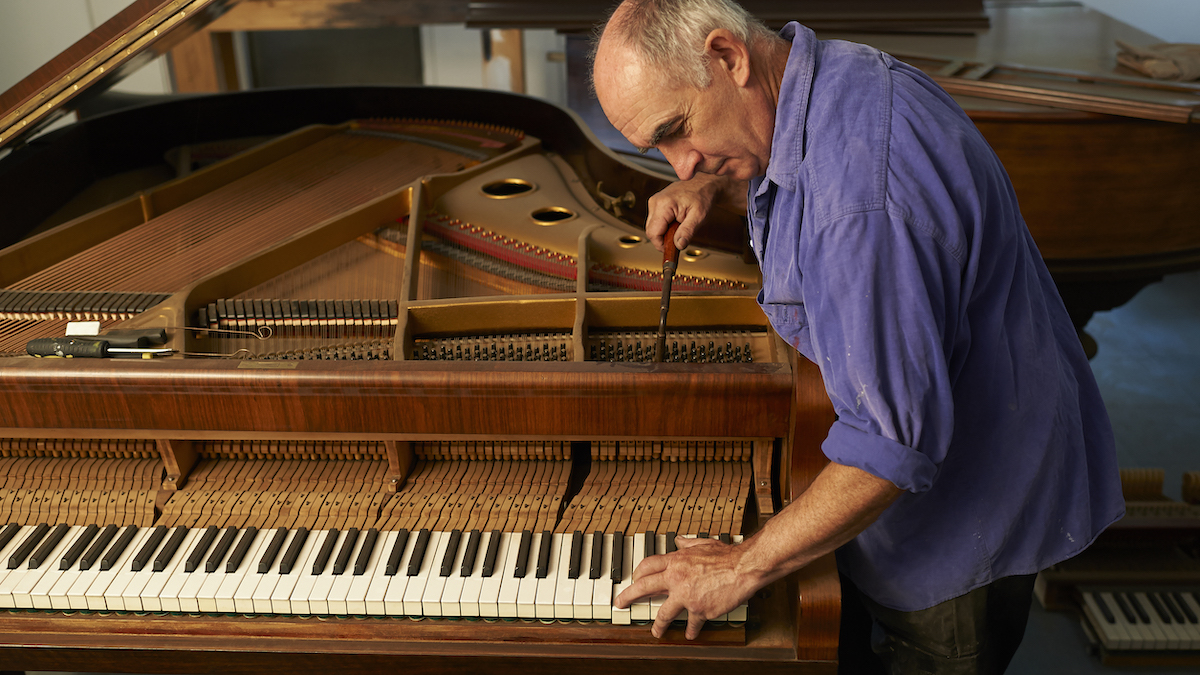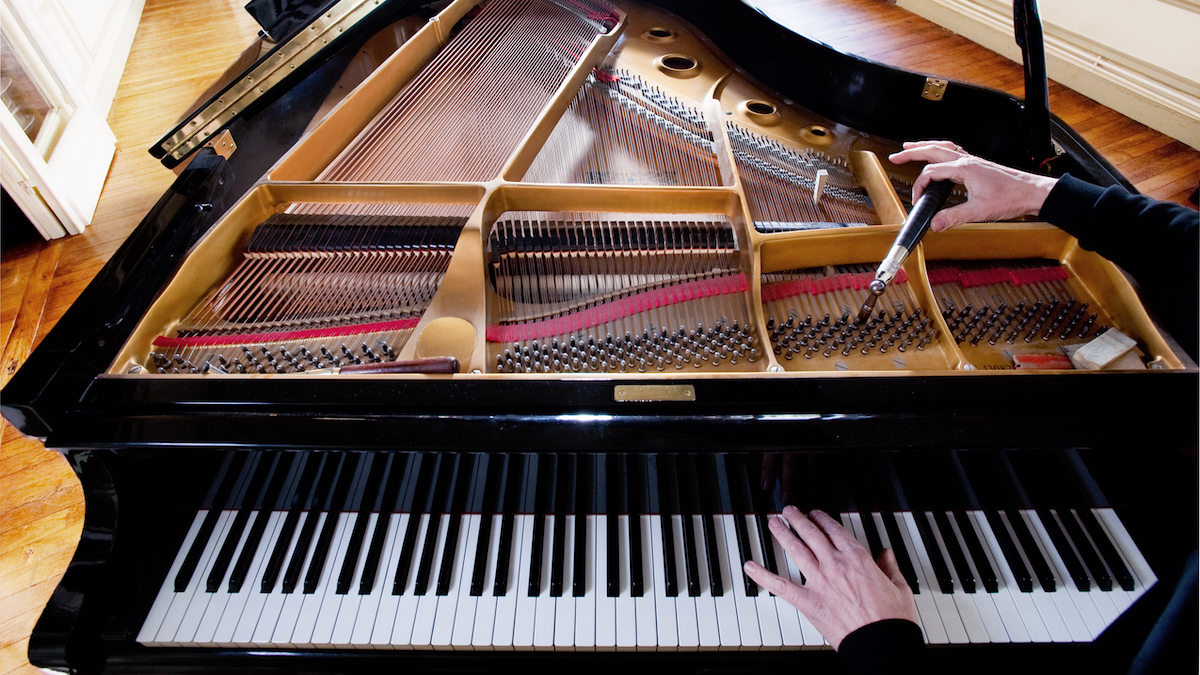How to tune a piano: plus, the pros and cons of doing it yourself
Everything you need to know about piano tuning, including our thoughts on the DIY approach

One of music’s great joys is the sound of a well-tuned acoustic instrument. Everything from guitars to drums to pianos all come to life when they’re properly tuned, but they can also stand out like a sore thumb if they’re not. Guitarists and drummers have it easy when it comes to tuning, but for pianists, life is a lot more difficult. In this article, we’re going to outline the processes and steps required for anyone interested in learning how to tune a piano.
Pianos typically have 88 keys, and each one of these keys could have up to three strings, each of which must be perfectly tuned to unlock the magic of the instrument. One key, or one string, being a few cents out could be enough to make the whole thing sound, well, wrong.
Spoiler alert: while we’re all for the DIY ethos, there are certain things we would strongly advise you don’t attempt yourself. Piano tuning is such a specialist, niche skill that it can take a lifetime to perfect, so before you go attacking your much-loved family instrument in order to save some money, please read the article in its entirety first.
How does a piano work?
First, a high-level overview of how a piano actually works. While acoustic pianos may seem relatively simple, they are in fact fairly complex instruments that produce sound through a combination of mechanical and acoustic elements. When a key is pressed on the piano, it sets off a series of mechanical actions. Each key is connected to a series of levers and pivots called the key action. When the key is pressed, it activates a mechanism that propels a small wooden hammer towards a set of strings. These hammers, typically covered in felt, strike these high-tensile strings with force when the keys are pressed.
From there the piano’s soundboard, across which the strings are stretched, amplifies the vibrations produced by the strings. As the strings vibrate, they transfer energy to the soundboard, which resonates, resulting in a rich and vibrant sound. When a key is subsequently released, a system of felt dampers comes into contact with the strings, stopping their vibration and producing a muted sound.
Simple, right?
How to tune a piano: Step-by-step

Tuning a piano is a complex task that requires both skill and experience. Believe us when we say it is best left to professional piano technicians who have undergone specialized training. However, because we’re all interested in what happens under the hood, so to speak, we can provide you with a bit more of an overview of the process involved in tuning a piano.
Get the MusicRadar Newsletter
Want all the hottest music and gear news, reviews, deals, features and more, direct to your inbox? Sign up here.
As you’d expect, there are some tools you will need, and some prep to undertake. For starters, ensure that the piano is clean and free from any debris. It's important to have good lighting at this stage so you can see the strings clearly. You'll need a couple of tools too, namely a tuning lever or wrench, which is used to adjust the tension of the piano's strings, along with mutes to isolate specific strings while tuning. And, of course, you’ll need a tuning reference, either in the form of an electronic tuner or - if you’re skilled enough - a traditional tuning fork. You might even consider using one of the many smartphone tuning apps - we’re particularly fond of the Boss Tuner from Roland (Android/iOS) but you may have your own preferred app.
Step 1
Begin by locating the A4 key on the piano, which is the A above middle C. This key is typically tuned to the industry standard frequency of 440 Hz, but it can vary depending on the desired pitch. Once tuned, you’ll need to identify the unisons, which are pairs or groups of strings that are meant to produce the same pitch. Using the tuning lever, you'll adjust the tension of each string in unison until they produce the desired pitch. This process involves comparing the pitch of the strings to a reference tone and making fine adjustments as needed.
Step 2
Once the unisons are tuned, you can move on to tuning the octaves. Octaves consist of two strings per note, with one string tuned slightly higher than the other. The lower string is referred to as the "unison" string, while the higher one is called the "beating" string. The goal is to tune the beating string so that it produces a slight "wobble" or beating sound when played with the unison string. This effect creates a rich and full sound.
Step 3
After tuning the octaves, carefully and methodically, it's important to check the whole piano to ensure all the notes are correctly in tune. This process involves playing chords, scales, and intervals to listen for any discrepancies or out-of-tune notes. Adjustments may be required to individual strings or sections of the piano to achieve overall harmony. It’s important to be patient here; even the most experienced professionals, with the best ears, can spend many hours achieving the perfect tuning. So, unless you’re due on-stage at Wembley within the hour, you can afford to take your time. Even better; heed the earlier warning and enlist a professional to help. Pianos, particularly older ones, can be temperamental beasts and require an experienced ear to get the best out of them.
The benefits of hiring a piano tuner

Hopefully we’ve made the point enough now; the smart money is always on hiring a specialist piano tuner. You might be worried about the cost, but it probably won’t be a huge amount, and once it’s done you don’t need to worry about it again for a little while - the general rule of thumb for a well-played, well-used piano is to have it tuned twice a year, but your mileage may vary.
The actual cost of piano tuning can vary depending on several factors. The condition of the piano plays a role in the cost of tuning; if the piano has not been tuned for a long time or if it requires additional repairs or adjustments, the tuning process may take longer and require more work, which can result in higher costs.
A professional piano tuner will also make a judgement based on the size and type of piano. As you’d expect, grand pianos tend to be more expensive to tune compared to upright pianos due to their larger size and more complex construction. Additionally, some specialized pianos, such as antique or high-end instruments, may require additional expertise and care during the tuning process, which can increase the cost.
A decent piano tuner may offer additional services to help bring an old or broken piano back to life. For example, if the piano has broken strings, sticky keys, or other mechanical issues, these can be addressed during the tuning session, potentially increasing the overall cost, but ensuring there’s nothing left to frustrate you afterwards.
In general though, as with many things in life, you get what you pay for. We can’t stress enough that piano tuning is a specialised skill that requires expertise and precision. While it may be tempting to opt for a cheaper option, it's important to choose a qualified and experienced piano tuner to ensure the best results for your instrument. Hiring a professional technician not only ensures proper tuning but can also help identify any underlying issues that may require attention.
For more accurate information, relevant to your location and requirements, try and locate any local piano tuners or technicians for quotes. They will be able to provide you with accurate and up-to-date pricing information based on your location and the specific requirements of your piano.
Related buyer's guides
- Best digital pianos: options for every level and budget
- Essential piano accessories: everything you need to get started
- Best piano benches: hand-picked options for maximum comfort
Chris Corfield is a journalist with over 12 years of experience writing for some of the music world's biggest brands including Orange Amplification, MusicRadar, Guitar World, Total Guitar and Dawsons Music. Chris loves getting nerdy about everything from guitar and bass gear, to synths, microphones, DJ gear and music production hardware.
MusicRadar deals of the week: Enjoy a mind-blowing $600 off a full-fat Gibson Les Paul, £500 off Kirk Hammett's Epiphone Greeny, and so much more
“For those who think they know Joel’s story, as well as those who are not as familiar, I believe this two-part film is both a revelation and a surprise”: New Billy Joel doc is on the way










